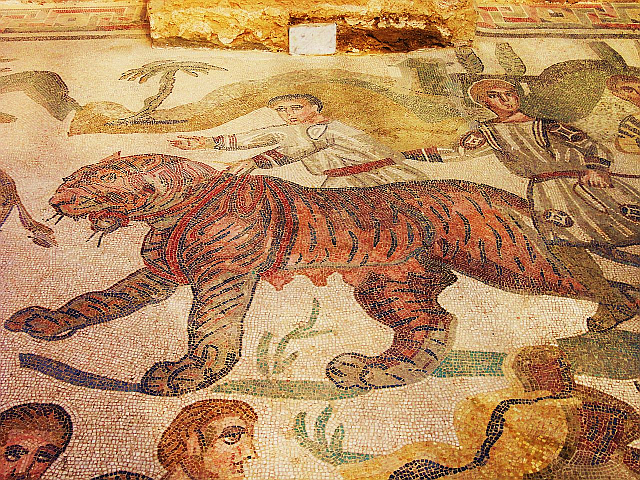 |
| Phaedra and Nurse, Pompei |
Interwoven motifs in the Hippolytus suggest great care on Euripides' part. Take, for example, this exchange between the "nurse" (nurturer, caregiver) and Phaedra (316-17):
Τροφός ἁγνὰς μέν, ὦ παῖ, χεῖρας αἵματος φορεῖς;Every noun here is fraught with gathering layers of significance at play in the text. Hands -- the act of touching, being touched, the external border between two interiors, the touch of pollution -- will return throughout, with great power in the closing scene. There, Theseus, finally knowing, says to Hippolytus:
Φαίδρα χεῖρες μὲν ἁγναί, φρὴν δ᾽ ἔχει μίασμά τι.
Nurse Pure and clean, (hagnos), child, are your hands from bearing blood?
Phaedra My hands are pure, my heart bears the stain (miasma).
Θησεύς ἦ τὴν ἐμὴν ἄναγνον ἐκλιπὼν χέρα;
TheseusThe play of hand and heart, internal and invisible vs. external, visible (the word martyr, μάρτυς, i.e., "witness," runs throughout the text), word and act, intent and execution, is everywhere, as is the motif of purity, being clean, free, of pollution (miasma, stain.)
And will you leave me with my hands unclean?
It pays to not exclude choral songs from this interplay. Take the first lines of the first Choral Ode:
Χορός"Ὠκεανοῦ τις ὕδωρ στάζουσα πέτρα λέγεται,
βαπτὰν κάλπισι πα-
γὰν ῥυτὰν προιεῖσα κρημνῶν:125τόθι μοί τις ἦν φίλα
πορφύρεα φάρεα
ποταμίᾳ δρόσῳ
τέγγουσα, θερμᾶς δ᾽ ἐπὶ νῶτα πέτρας
εὐαλίου κατέβαλλ᾽: ὅθεν μοι130πρώτα φάτις ἦλθε δεσποίνας,
Chorus There is a cliff dripping water whose source, men say, is the river Oceanus:1 it pours forth from its overhanging edge a flowing stream in which pitchers are dipped. It was there that I found a friend soaking her purple clothes in the river-water and laying them out on the warm rock's broad back in the sun. From there it was that I first had news of my queen.With astonishing economy, the song evokes the totality of Ocean encircling the Earth, from which drips a river's water, from which pitchers draw to clean the queen's purple clothes, which then are laid out on the rocks, exposed to the sun.
The robes of the queen are the border between her hidden self and the external world. Here, the first "news" we have of Phaedra comes as her purple garments are being purified, cleansed of stain. The commonplace image seems nothing more until we encounter the darkly intense ways in which heart, hand, stain, purity, touch, pollution and respect (semnos), are interwoven in the web of the play.
Perhaps not by chance, the word φάρεα (pharea) -- "clothes"-- most basically signifies a web, a woven thing. And Phaedra's name derives from φαιδρός (phaidros) -- "bright".

No comments:
Post a Comment